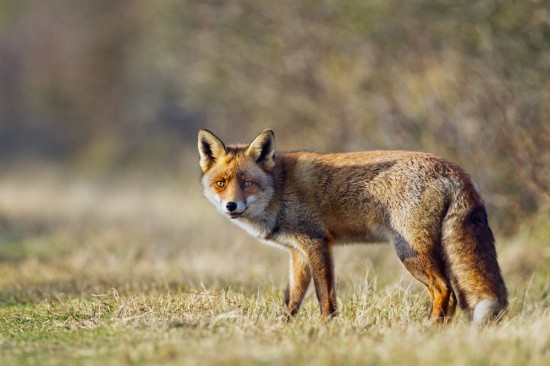

If you like to keep up to date with the national news, you will probably have become aware of recent reports that a four-week-old baby from South London was attacked in his own home by a fox earlier this month. While attacks of this type are considered extremely unusual and unlikely to recur under most circumstances, nevertheless, the issue of foxes and their potential propensity to attack other wildlife and even domestic pets is something that comes up time and time again.
If you keep small mammals such as rabbits and guinea pigs outside, or own chickens or other birds, you are probably already aware of the potential risks, and may be wondering what you can do to keep your animals safe from wild fox attacks. However, what about other pets? If you own a cat or a dog, are they also potentially at risk from attack by foxes? Read on to find out more.
Contrary to most people’s perceptions, the areas of the country most likely to provide a suitable habitat for a large population of foxes are not rural, sparsely populated areas, but inner cities and urban regions. While foxes can of course be found living in the wild across most areas of the UK and in the countryside, built up inner-city environments are in fact the areas within which you are most likely to see a significant amount of foxes. Foxes are hunter-scavengers, meaning that they are equally happy eating prey that they catch for themselves, and abandoned and scavenged food. The discarded human food, unguarded bins and people deliberately providing food for other wildlife in urban areas can all lead to a significant fox population making their home among the urban sprawl of the inner city and the suburbs.
There is a great deal of debate as to whether foxes pose a risk to domestic animals such as cats and dogs, which will generally defend themselves fiercely and fight back if attacked, while small caged animals and birds living outdoors are universally considered to be at potential risk.
As well as being potential predators of prey animals, foxes can sometimes spread parasites and diseases. Foxes are usually rife with fleas, and can also carry worms and a range of diseases and conditions that may be passed on to pets such as cats and dogs. If you suspect that one of your pets has come into close contact with a fox, ensure that they are up to date with their worming, vaccinations and flea treatment protocols. If any of your animals gets into a scrape with a fox, even if they appear unharmed, it is always worth taking your pet along to the vet for a check-up, and to ensure that no fox-related nasties have jumped ship to reside on your own pet.
 Sticking To A Regular Routine To Help To Reduce Stress In Your Dog
Sticking To A Reg
Sticking To A Regular Routine To Help To Reduce Stress In Your Dog
Sticking To A Reg
 Tips On How To Keep A Lawn Looking Good For Dog Owners
Tips On How To Ke
Tips On How To Keep A Lawn Looking Good For Dog Owners
Tips On How To Ke
 Wolves And Dogs - The Origins Of The Domestic Dog
Wolves And Dogs -
Wolves And Dogs - The Origins Of The Domestic Dog
Wolves And Dogs -
 Top Tips For New Dog Owners
Top Tips For New
Top Tips For New Dog Owners
Top Tips For New
 Ultra-typing Or Over-typing In Cats And Dogs
Ultra-typing Or O
Ultra-typing Or Over-typing In Cats And Dogs
Ultra-typing Or O
Copyright © 2005-2016 Pet Information All Rights Reserved
Contact us: www162date@outlook.com